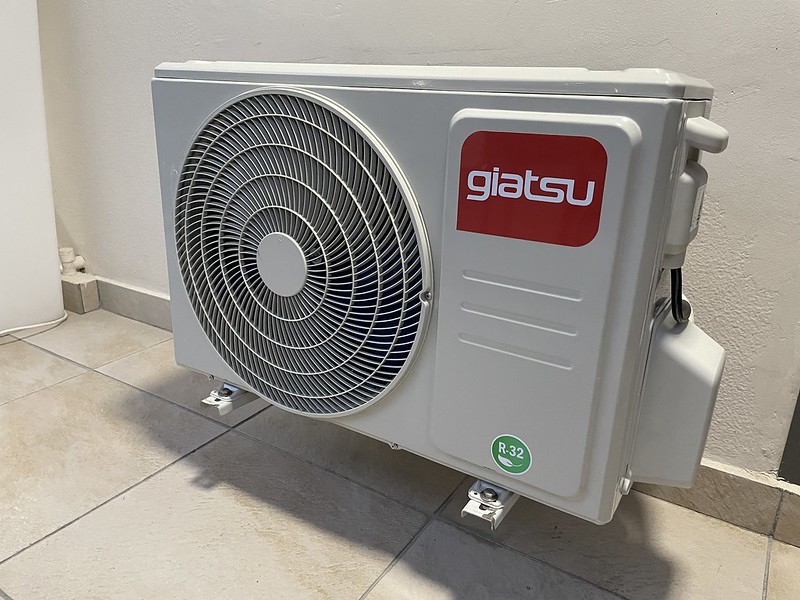A mini-split air conditioning (AC) system can freeze up inside due to several technical reasons, primarily related to poor air circulation, low refrigerant levels, and low outside temperatures. Understanding the underlying causes and taking proactive measures can help prevent this issue and maintain the efficiency of your ductless cooling system.
Poor Air Circulation
One of the leading causes of a mini-split AC freezing up is poor air circulation. This can be attributed to several factors:
-
Dirty or Clogged Air Filter: A dirty or clogged air filter restricts the airflow, causing the evaporator coil to become too cold and leading to ice buildup. Regular cleaning or replacement of the air filter is crucial.
-
Defective Evaporator Coil: If the evaporator coil is damaged or not functioning correctly, it can cause uneven cooling and lead to freezing. Inspecting the coil for any signs of damage or corrosion is essential.
-
Failing Fan or Blower: A malfunctioning fan or blower can also impede air circulation, resulting in the evaporator coil becoming too cold and freezing up. Checking the fan and blower for proper operation is necessary.
To address poor air circulation, follow these steps:
- Clean or replace the air filter regularly, as per the manufacturer’s recommendations.
- Inspect the evaporator coil for any signs of damage or corrosion, and have it cleaned or repaired by a certified HVAC technician if necessary.
- Ensure the fan and blower are functioning correctly by checking for any obstructions or issues with the motor.
Low Refrigerant Levels
Another common cause of a mini-split AC freezing up is low refrigerant levels. When the refrigerant level is low, the air conditioner works harder to create cool air, leading to excessive cooling and ice buildup on the evaporator coil.
To diagnose and address low refrigerant levels, follow these steps:
-
Refrigerant Leak Detection: Inspect the refrigerant lines and connections for any signs of leaks, such as hissing sounds or visible oil stains. Use a leak detection dye or an electronic leak detector to identify the source of the leak.
-
Refrigerant Recharge: Once the leak has been identified and repaired, the refrigerant must be recharged by a certified HVAC technician. Attempting to recharge the refrigerant yourself can be dangerous and is not recommended, as it requires specialized equipment and knowledge.
-
Proper Refrigerant Handling: Refrigerants used in mini-split AC systems, such as R-410A or R-32, are highly regulated and must be handled with care. Only certified HVAC technicians are qualified to handle and refill refrigerants, as improper handling can be hazardous.
Low Outside Temperatures
Low outside temperatures, particularly near or below freezing levels, can also cause a mini-split AC to freeze up inside. This is because the system is designed to operate efficiently within a specific temperature range, and exposure to extremely cold conditions can disrupt the normal operation.
To prevent freezing due to low outside temperatures, consider the following:
-
Avoid Using the AC in Cold Weather: If the outside temperature is near or below freezing, it’s best to avoid engaging the mini-split AC unit. Instead, use alternative heating methods to maintain comfort in the space.
-
Consult the Manufacturer’s Recommendations: Check the manufacturer’s specifications for the minimum operating temperature of your mini-split AC system. This information can help you determine the appropriate conditions for safe operation.
-
Install Cold Weather Accessories: Some mini-split AC systems come with optional cold weather accessories, such as low-ambient kits or wind baffles, that can help maintain efficient operation in colder climates. Consult with a professional HVAC installer to determine if these accessories are compatible with your system.
Improper Installation and Lack of Maintenance
In addition to the factors mentioned above, improper installation or a lack of regular maintenance can also contribute to a mini-split AC freezing up inside. Ensure that your system is installed correctly by a qualified HVAC professional, and follow the manufacturer’s recommended maintenance schedule, which typically includes:
-
Cleaning or Replacing Air Filters: As mentioned earlier, dirty or clogged air filters can restrict airflow and lead to freezing. Regular cleaning or replacement is essential.
-
Inspecting and Cleaning the Evaporator Coil: The evaporator coil should be inspected and cleaned periodically to remove any buildup of dirt, dust, or debris that can impede airflow and cause freezing.
-
Checking Refrigerant Levels: Regular monitoring and maintenance of refrigerant levels by a certified HVAC technician can help prevent issues related to low refrigerant.
-
Verifying Proper Airflow: Ensuring that the mini-split AC system is providing adequate airflow throughout the space is crucial for preventing freezing.
By addressing these potential causes and following a regular maintenance routine, you can help prevent your mini-split AC from freezing up inside and maintain its optimal performance.
Conclusion
A mini-split AC system can freeze up inside due to a variety of technical reasons, including poor air circulation, low refrigerant levels, and low outside temperatures. Understanding these causes and taking proactive measures, such as regular maintenance and consulting with professional HVAC technicians, can help you keep your ductless cooling system running efficiently and prevent costly repairs.
Remember, always prioritize safety when dealing with any HVAC-related issues, and never attempt to handle refrigerant or perform complex repairs yourself unless you are a certified professional.

